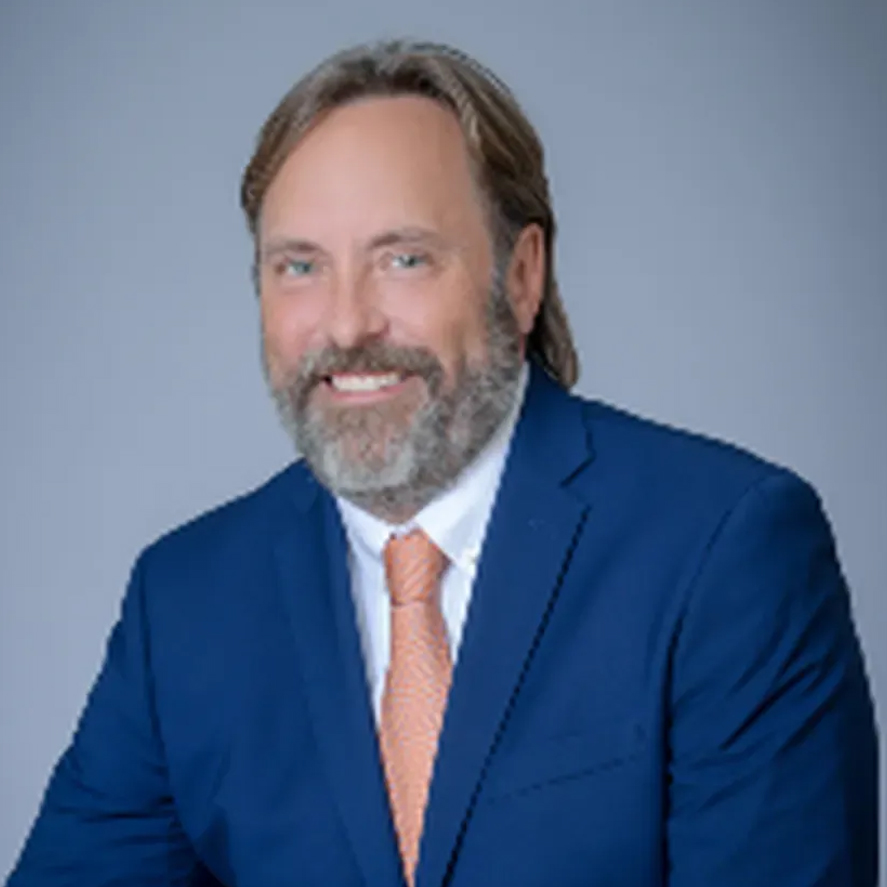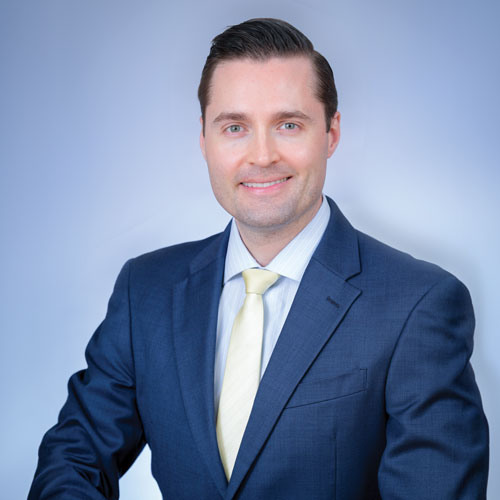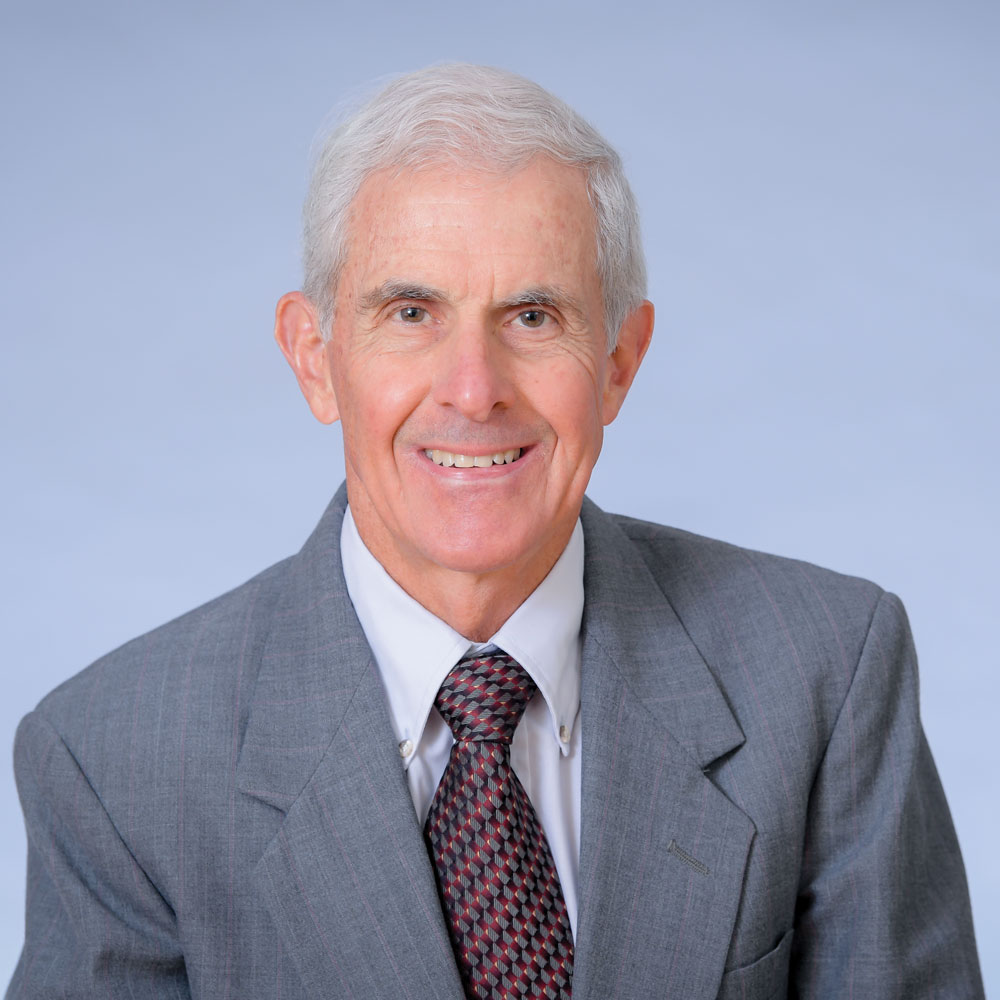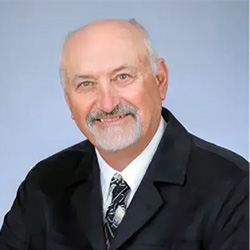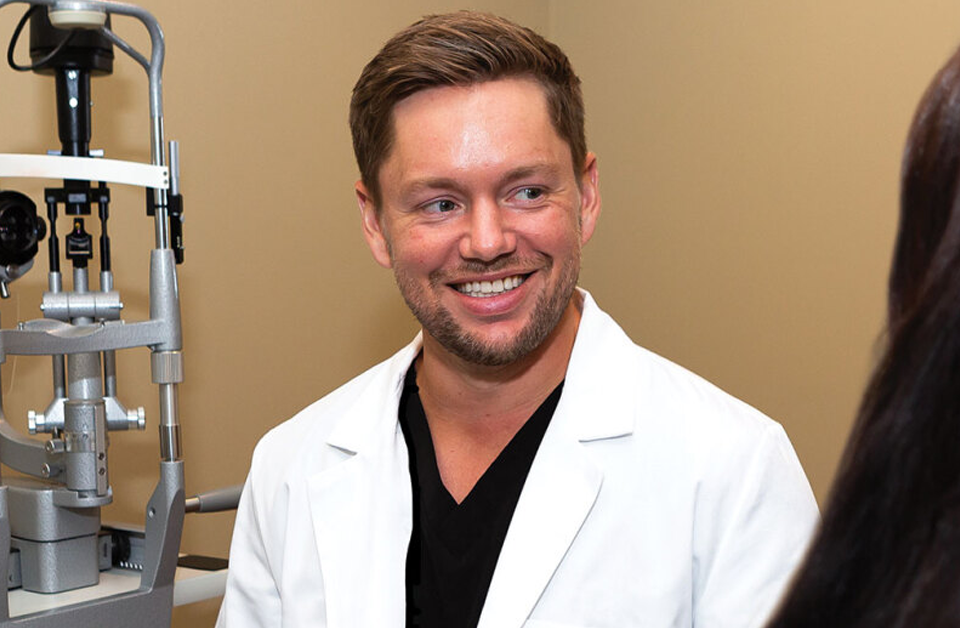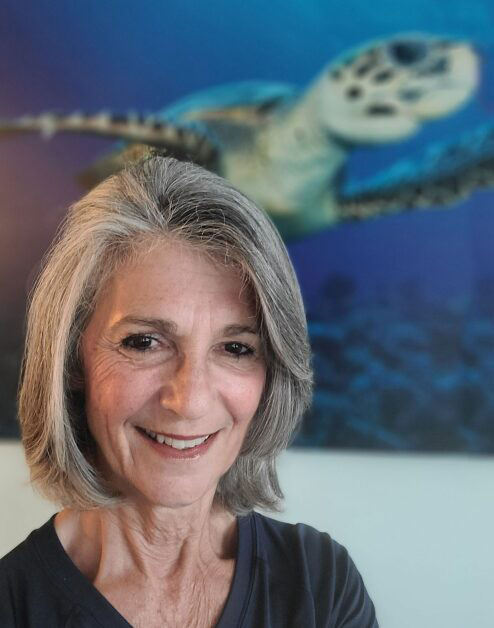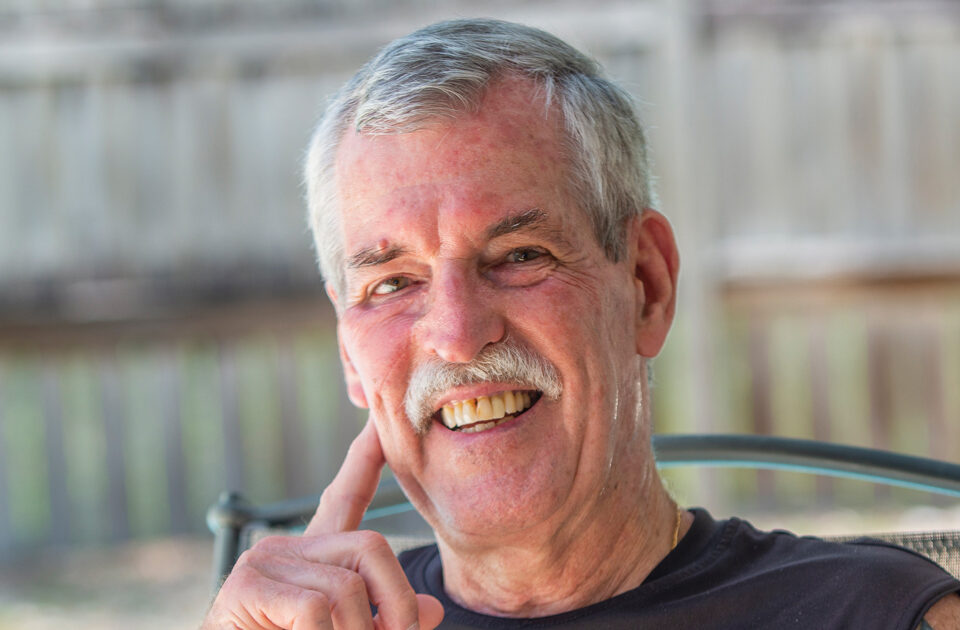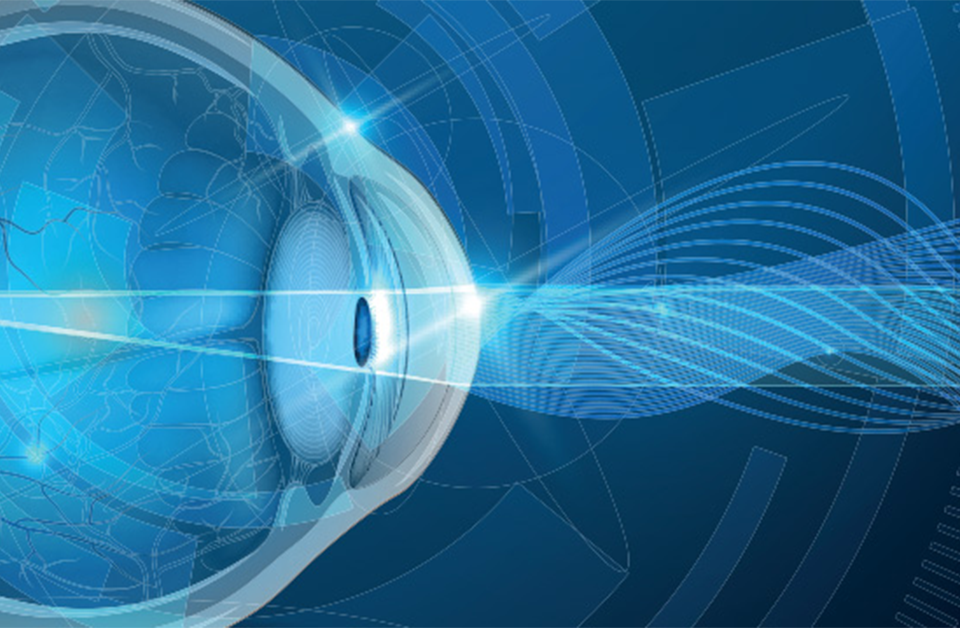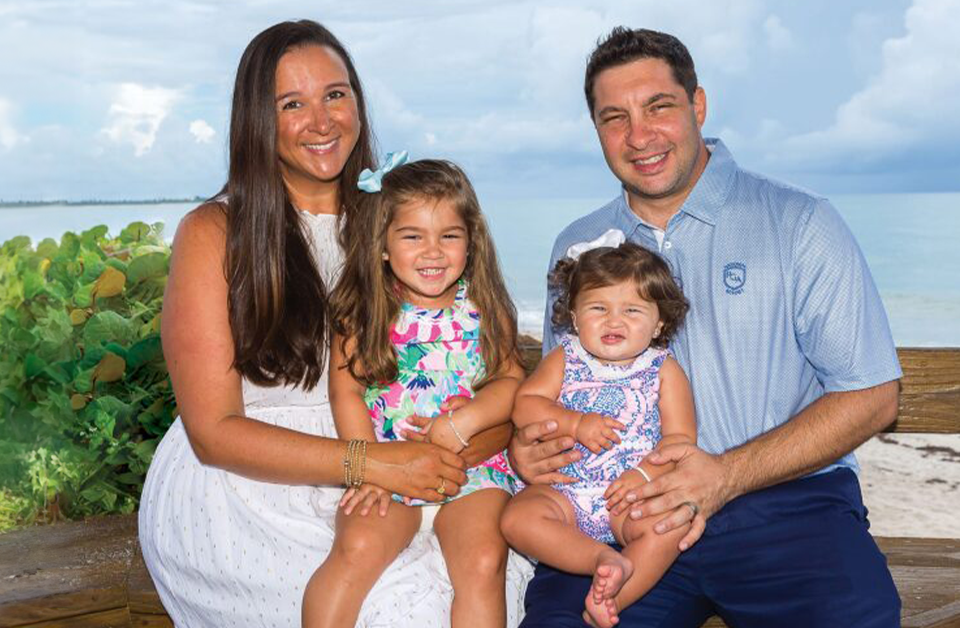From his front-row seat in the press box, Gary Parris has seen every pass, tackle and touchdown in what can only be described as one of the most incredible ascensions in college football history, that of the University of Central Florida to NCAA Division I power.
As the Knights’ radio analyst, he watched the Orlando school advance to the Division II playoffs in 1987, then jump to Division I-AA and reach the postseason in the 1990s. And, of course, he was there when UCF claimed a Division I title in 2017.
“I’ve been at UCF for 25 years, and it’s been a great ride,” says Gary, 71. “I’ve seen a lot of great young men grow up and watched many of them move on to the NFL, which is a real thrill.”
A football star at Vero Beach High, he went on to become a three-year letterman at Florida State University, then spent eight years in the National Football League.
Afterward, he returned to Vero Beach, where he has served as the football analyst for his prep alma mater over the past 40 years. That’s on top of his UCF duties.
“I first got into football when I was 10 years old, and I haven’t left it since, so that’s 61 years I’ve been involved in the game,” Gary notes. “I have definitely lived a football life, and I love it.”
Life Interrupted
Gary’s life was recently shaken up by the development of cataracts, a clouding of the eye’s lens that affected him in the press box and away from the football field.
“I’ve worn glasses for the past 15 years, but even with my glasses on I was having a hard time reading the numbers on the player jerseys,” Gary explains. “It was especially tough during night games.”
Then, there were the trips home after games.
“When driving from a game late at night, I had to have my glasses on all the time just to see anything at all,” he describes. “Even then, it was still hard to see far off. I was seeing halos around lights. And not just one halo, a bunch of halos.”
Gary was certain the problem was due to cataracts. He learned of their development a decade earlier during a routine eye exam and was told he would eventually need surgery to remove them.
“When I first went to my eye doctor, he told me I’d need glasses in a year or two, and he was right,” Gary recalls. “A few years later, he said I was probably 10 years away from needing cataract surgery. It turns out he was right about that, too.”
Gary’s eye doctor is Val Zudans, MD, a board-certified ophthalmologist with the Center for Advanced Eye Care. When Gary returned complaining of his vision issues, Dr. Zudans quickly confirmed the cause was cataracts.
“If you don’t have an eye doctor, or even if you do, you owe it to yourself to see Dr. Zudans.” – Gary
The only treatment for cataracts is surgery, which is typically performed on one eye at a time with a week or two between procedures. Each takes about 10 minutes and is done with the patient awake and alert, using anesthesia eyedrops.
During each surgery, an ultrasonic device breaks down the clouded lens and the small pieces are gently vacuumed out. The natural lens is then replaced with an artificial intraocular lens, or IOL.
IOLs are made of acrylic or silicone and are coated with a material to protect the eye from the sun’s ultraviolet rays. During surgery, the IOL is rolled up and placed in the eye. Once in place, the lens is unfolded and side structures called haptics hold it in place.
Like contact lenses, IOLs are available in different focusing powers. Standard IOLs correct primarily for distance vision, but patients can have one eye fixed for distance and the other for reading, an option called monovision.
A third option is multifocal IOLs. Most multifocal IOLs are bifocal lenses that correct distance and either reading or intermediate vision. However, there are now advanced multifocal options that correct vision at all three distance levels.
The advanced multifocal IOLs are designed to reduce or eliminate the need for glasses, including readers, following cataract surgery. Dr. Zudans warns, however, that there is sometimes a tradeoff the patient must make to get that convenience.
“With advanced multifocal IOLs, some people experience starbursts or halos around lights, so night driving may not be as good with them,” the doctor confirms. “That factor figured prominently into my recommendation for Gary.”
Considering Gary’s work as a football analyst and the long drives following games, Dr. Zudans recommended an IOL known clinically as an extended depth of focus lens (EDOF).
“This is primarily a distance lens, but it has a greater depth of focus,” Dr. Zudans educates. “This means that you can clearly see in the midrange, like when you’re looking at a computer, and you can clearly see in the near range if the lighting is good.
“Now, if the lighting is low, you’re definitely going to need reading glasses for anything up close. But with the wider depth of focus, there is no sacrifice in quality in terms of sharpness of vision, even when driving at night.
“That’s why a lot of people end up choosing this lens. It’s not as exciting or as sexy as some of the newer lenses, but it offers the best quality in my opinion. This is the lens I would want if I were having cataract surgery.”


Jordan Pysz / ifoundmydoctor.com Cataract surgery has greatly reduced Gary’s dependence on eyeglasses.
Eye-Popping Results
Dr. Zudans’ recommendation was good enough for Gary, who agreed to be fit with EDOF lenses during cataract surgeries this past summer. The results have been eye-popping.
“It’s amazing how much better my vision is now,” Gary exudes. “For one thing, colors are much brighter, and my distance vision is exceptional. I like to sit out and look up at the stars at night, and I used to wear glasses to do that.
Not anymore.”
“Now, when I’m driving, I can read street signs more clearly and from farther away than I used to. I can also see the computer clearly, and I only need reading glasses if there’s very little light. These lenses have improved my entire quality of life.
“I can’t say enough great things about Dr. Zudans and all that he’s done for me. He is one of the nicest people you’ll ever meet and very professional. He does a great job of explaining the procedures he’s going to do for you.
“I’ll tell you right now, if you don’t have an eye doctor, or even if you do, you owe it to yourself to see Dr. Zudans and get to know him because he and his staff are nothing short of exceptional.”





